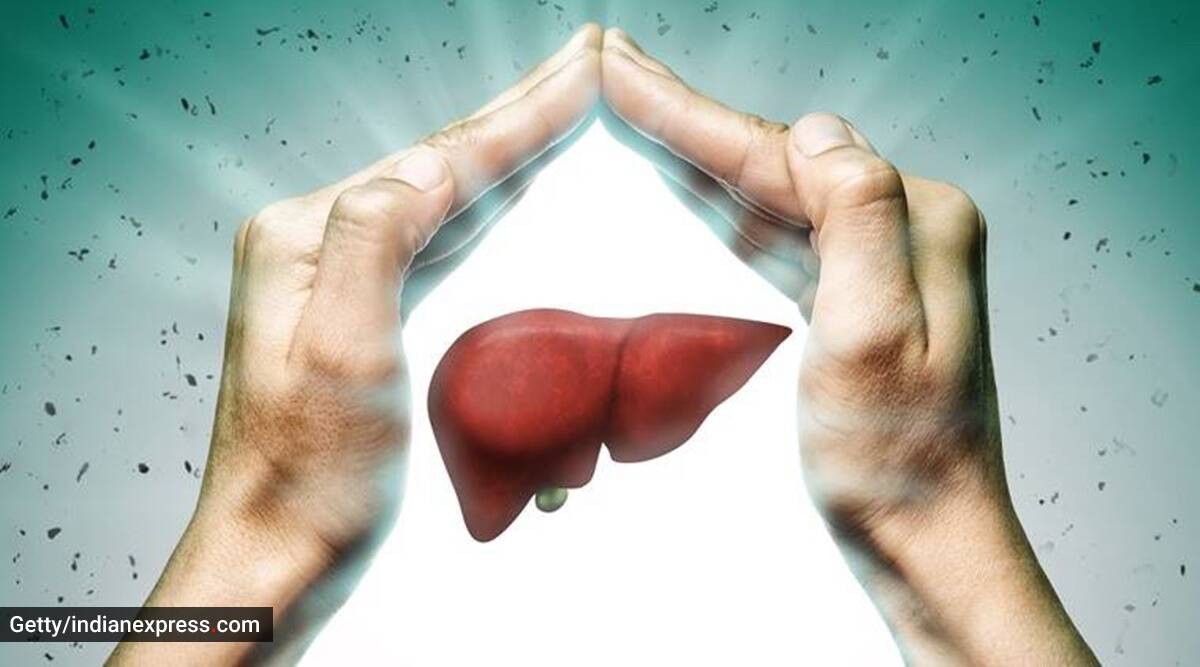All you need to know about fatty liver disease in children

Non-alcoholic fatty liver disease (NAFLD) is a highly prevalent liver disease that affects 34 per cent of children with obesity, according to a study published on pubmed.gov. Medical News Today stated that NAFLD is the most common liver disease among children in the United States, and the number seems to be rising worldwide. Besides liver-related morbidity, NAFLD also increases the risk of cardiometabolic diseases in adulthood.
“Fatty liver disease occurs when there’s too much fat accumulates in the liver,” Dr Shailesh Sable, consultant, liver transplant and HPB surgeon, Apollo Hospitals, Navi Mumbai, told indianexpress.com. He further added: “Fat triggers inflammation (leading to injury of liver or hepatocytes) and results into healing by fibrosis (scarring) and ultimately end-stage liver disease called cirrhosis.”
The doctor also noted that childhood obesity is rising over the last two decades and is directly related to the simultaneous rise in paediatric fatty liver disease. “Parents are unaware that obesity has a direct relationship with diabetes (type 2) and metabolic syndrome which is also a perfect recipe for fatty liver disease. The main reason behind this is a sedentary lifestyle and unhealthy eating habits (fast food or preserved foods). However, not all fatty liver diseases are related to obesity, there are also some genetic mutations which can lead to fatty liver (mainly related to cholesterol homeostasis).”
NAFLD is a silent disease, which means it is generally a symptomless condition. But, Dr Sable shared that as the disease progresses to fibrosis and/or cirrhosis stage it can interfere with critical functions of the liver. In the early stage, symptoms could be easy fatigue or feeling of tiredness, or subtle discomfort in the right upper abdomen. Stage of cirrhosis may present with jaundice, fluid in the tummy or swelling over the legs, disorientation or excessive daytime sleepiness, etc.
Are diet and exercise the sole solutions?
Dr Sable said that even though eating a balanced diet, limiting sugars and salt, consuming lots of green leafy vegetables and fresh fruits along with regular exercise does reduce weight, thereby reducing fatty liver, not all fatty livers are associated with obesity alone; lowering cholesterol with the help of medications are sometimes indicated under specialist medical supervision. “There is no medication approved for fatty liver disease, some studies indicate the role of vitamin E and anti-diabetic drugs but remain experimental. Till then balanced diet and regular exercise remain the gold standard therapy,” he said.
What can parents do?
Screening for fatty liver is a controversial topic at this moment, partly because there’s no treatment other than weight loss and non-availability of perfect screening tool. Dr Sable said that “ultrasonography (USG) of liver (prone to inter-observer variation) and liver function test (AST/ALT) to check inflammation in liver are the commonly used modalities by most clinicians.” Rarely, MRI of the liver can be used to grade the fat in the liver. However, the requirement of sedation in smaller kids, high cost and claustrophobia limits its utility, he added.
What can be the complications if the disease progresses unchecked?
Fatty liver disease is a spectrum of disease ranging from mild fat accumulation in liver (fatty liver) to NASH or non-alcoholic steatohepatitis (inflammation in fatty liver) to cirrhosis (end stage liver disease). And even though cirrhosis due to inflammation is rare in children, it’s a concerning long term complication that leads to end stage liver disease, said Dr Sable. “Cirrhosis presents itself with jaundice, Ascites (fluid in tummy), encephalopathy (disorientation/ coma), and dysfunction of other organs like kidneys, heart and lungs.”
Liver maintains body’s metabolism, helps clearing toxins and waste products, provides immunity (filtering bacteria from blood), manufactures proteins and cholesterol and helps blood clotting etc. “If it stops working due to cirrhosis (end stage liver disease), then liver transplantation is the only life-saving treatment option available.”
Read More : All you need to know about fatty liver disease in children
